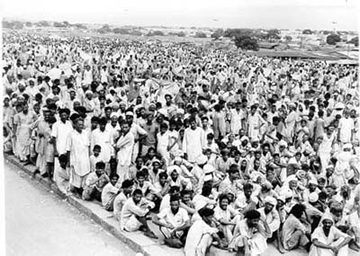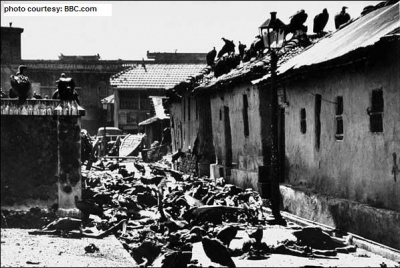Creation of India and Pakistan
India and Pakistan celebrate 62nd Independence day
What exactly happened 62 years ago? (Published on August 14, 2009 by A Kaur}
Two self governing countries legally came into existence at the stroke of midnight on 15 August 1947. 14 August, 1947, saw the birth of the new Islamic Republic of Pakistan. At midnight the next day India won its freedom from colonial rule, ending nearly 350 years of British presence in India. The British left India divided in two. The two countries were founded on the basis of religion, with Pakistan (later declared) as an Islamic state and India as a secular one.
India’s Independence Day is celebrated on August 15 to commemorate its independence from British rule and its birth as a sovereign nation on that day in 1947. The day is celebrated all over the country and by a growing diaspora around the world. Pakistan became independent on the previous day. What is sometimes forgotten is that the period signifies the single largest human migration of people in modern history. Till today, there is no institutional memory of Partition: the State has not seen fit to construct any memorials, to mark any particular places – as has been done, say, in the case of Holocaust memorials, or memorials for the Vietnam War.
There is nothing at the border that marks it as a place where millions of people crossed, no plaque or memorial at any of the sites of the camps, nothing that marks a particular spot as a place where Partition memories are collected.
Between 12-14 million people who had homes that their families had occupied for decades (often centuries) became ‘political’ refugees to take up residence across the border. Estimates of how many people died vary immensely, hovering in the half to one-half million ranges. Most scholars and observers round it to a million for convenience.
Partition was the dark side of independence: the question then is, how can it be memorialized by the State without the State recognizing its own complicity?
It is true that hundreds of thousands of people died as a result of Partition. A half century later, you might well be able to read them as martyrs to the cause of forging a new nation. But alongside, there is also the other, inescapable reality that millions of people were killed and in many families where there were deaths, there were probably also murders.
How do you memorialize such a history? What do you commemorate? For people, for the State, what is at stake in remembering? To what do you have to be true in order to remember?
It was not only that people killed those of the “other” religion, but in hundreds of instances, they killed people of their own families; it was not only that men of one religion raped women of the other, but in hundreds of instances, men raped women of the same religion.
What can you do to mark such a history as anything other than a history of shame? No matter how much Indian politicians, members of the Congress, tried to see themselves as reluctant players in the game, they could not escape the knowledge that they accepted Partition as the cost of freedom. Such histories are not easily memorialized.
In many countries in the world today, there are memorials to moments of conflict and upheaval. Either with State support or otherwise, scholars have painstakingly built up meticulous archives of people’s testimonies, of photographs, letters, documents, memoirs, books in which such historical moments are represented.
Very little of this exists for Partition. Until recently, little attempt has been made even to collect people’s accounts. Visual representations of Partition – despite the rich archive of photographs that must exist in many newspapers and magazines – remain limited, and while a half century of Indian independence has called for all manner of celebratory events, little has been done to mark this important event in the history of India.
We dedicate new website http://www.PunjabPartition.com to keep our young history alive.


